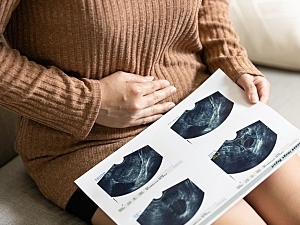In 2020, the American Journal of Obstetrics & Gynecology published 3-month results from COMPARE-UF (Comparing Options for Management: Patient-Centered Results for Uterine Fibroids), a nationally representative prospective cohort study of women who underwent procedural treatment of uterine fibroids (UFs). That short-term follow-up showed both hysterectomy and myomectomy were associated with substantial improvement in health-related quality of life (HR-QoL).
Now, Raymond M. Anchan, MD, PhD, of the Department of Obstetrics and Gynecology at Brigham and Women’s Hospital, Vanessa Jacoby, MD, MAS, of the University of California, San Francisco, Evan Myers, MD, MPH, of Duke University School of Medicine, and colleagues have reported long-term outcomes. In a new paper in the American Journal of Obstetrics & Gynecology, they say symptom severity and quality of life were comparable with surgical and nonsurgical uterine-sparing procedures. Still, only patients who underwent hysterectomy showed sustained relief at year 3.
Methods
Between November 11, 2015, and December 29, 2019, COMPARE-UF enrolled premenopausal adult women at 10 U.S. sites. The current analysis included 1,384 women over age 30 who underwent:
- Laparoscopic hysterectomy (n=522)
- Abdominal hysterectomy (n=177)
- Laparoscopic myomectomy (n=272)
- Abdominal myomectomy (n=237)
- Uterine artery embolization (UAE, n=176)
Patient-reported data on symptoms and quality of life were collected one, two, and three years after the procedure using the Uterine Fibroid Symptom and Quality of Life (UFS-QoL) questionnaire. UFS-QoL yields a 100-point symptom severity (SS) score and a 100-point HR-QoL score, which can be transformed into a 100-point total score.
Because the study was not randomized, the researchers used propensity score weighting to account for potential differences in baseline characteristics across treatment groups.
Results
The key findings were:
- All treatment groups showed improvement in SS score and total UFS-QoL score from baseline to year 3 post-treatment
- From baseline to 1 year, the most significant improvements were in the laparoscopic hysterectomy group (49-point change in SS score and 51-point change in total score)
- All uterine-sparing treatments (myomectomy and UAE) demonstrated comparable durability of symptom relief and improved quality of life at years 1 and 2
- With the uterine-sparing treatments, there was a trend toward an increased likelihood of symptom recurrence and a gradual decline in quality of life by year 3
Shared Decision-making Is Critical
The similarity in outcomes of myomectomy and UAE makes it important to counsel patients about the implications of all their treatment options. They should consider:
- Fertility-related concerns, including the possibility of diminished ovarian reserve after UAE
- The possibility of deferring definitive treatment
- Recovery time
- Family history
- The potential need for repeated treatment
This study identified an effect of race on treatment choices, as 69% of Black women opted for UAE compared with 22% of white women and 9% of those who indicated their race was “Other” (not Black and not white). This stark difference is difficult to interpret and suggests Black women’s nonclinical concerns should be carefully addressed.
Importantly, the findings emphasize the significance of shared decision-making in clinical settings. In 2019, the Brigham was involved in a multisite Patient-Centered Outcomes Research Institute (PCORI) trial which offered patients a decision-making tool for the medical and surgical management of fibroids. The results were published in Implementation Science, and the tool is currently embedded in EPIC for patient access. Moving forward, the team plans to utilize evidence-based findings, such as COMPARE-UF, to expand provider use of such tools to engage patients in their own healthcare.
